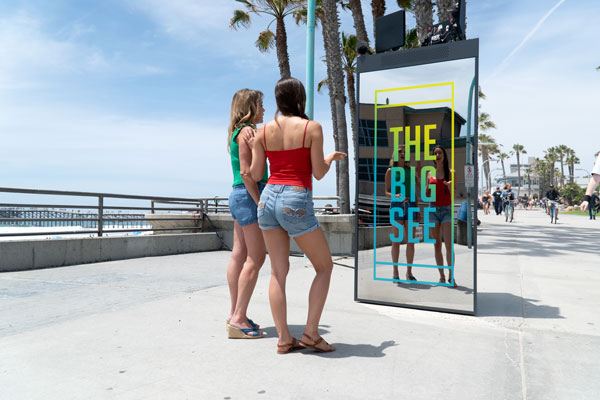Photo: GRADYREESE / E+ / GETTY IMAGES
Here, we show you how three simple words “new, changing, unusual” are changing the game and saving lives!
To make a bigger impact on the world’s most common cancer, the team at The Skin Cancer Foundation decided it was time for a new way of thinking about early detection. A simple but strong message and a way to empower people to play a big role in detecting skin cancers early, when they are easiest to treat and even cure. Here’s how our early detection campaign, The Big See® came to be.
The Big Idea
Early detection truly does save lives. For decades, the Foundation was loud and clear about the fact that most skin cancers are curable when discovered and treated early — and that delays in detection and treatment could be costly, even deadly. But with more than 5.4 million skin cancers diagnosed in the U.S. each year, and more than 20,000 deaths, it was time to hit the problem harder.
So, in order to make a bigger impact on early detection, what was the big idea? First of all, skin cancer is the cancer you can see, and you have the power to spot it early, when treatment is most effective. That message led to The Big See®, the Foundation’s game-changing early detection campaign. It leverages the seriousness of cancer — often called “the big C” — while reminding people of the visual aspects of skin cancer. Further, it delivers the message that early detection is in your hands.
But what should you look for when you’re looking for skin cancer? That’s where the messaging tends to be complicated. Skin cancers vary widely in appearance, even within the same types. No two basal cell carcinomas, squamous cell carcinomas or melanomas look the same. What’s more, the language describing skin cancer warning signs includes big words and concepts that aren’t easy to comprehend or remember. For instance, if you read the word “ulcerated,” what would it mean to you? Year after year, the top Google search term on SkinCancer.org has been, “What does skin cancer look like?” It’s a question that deserves a clear response.
The Big Collaboration
In 2019, we set out to deliver the definitive answer, one that is accurate and inclusive of the many ways that the world’s most common cancer arises on the skin. Working with the marketing pros at Digitas Health, who donated their time and resources, and conferring with medical experts, our team identified and described the three characteristics you should look for:
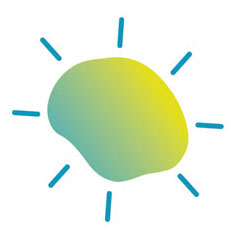
NEW
Something new on your skin that you never noticed before and makes you say, “Wait, what’s that?”
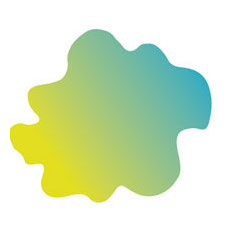
CHANGING
Any growth on your skin that has increased in size or thickness or has changed in color, shape or texture.
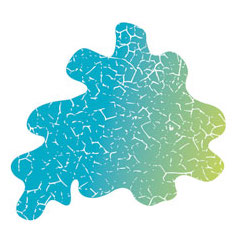
UNUSUAL
A spot, freckle or mole that looks different from the others should catch your eye. Is it darker, lighter or have more than one color? Does it bleed, itch, hurt, crust or not heal?
Three simple words — NEW, CHANGING, UNUSUAL — are the heart of The Big See, a public education initiative that’s exciting, easy to understand and provides clear guidance on what to look for and what to do next. The language is memorable and shareable, so it is easy to take action and spot early signs of skin cancer. This simplicity also helps dermatologists, who want educational messages that resonate with patients. Best of all? It makes skin cancer impossible to ignore!
“We decided that the best way to save more lives is to simplify the conversation around the warning signs of skin cancer. Everyone can understand the concept of looking for something that’s new, changing or unusual,” explains Deborah S. Sarnoff, MD, president of The Skin Cancer Foundation.
The centerpiece of The Big See is the Foundation’s first TV commercial in more than a decade. It is a public service announcement (PSA) filmed on a busy San Diego boardwalk. The star of the show is “Magic Mirror,” a cool, witty and interactive, yes, mirror. Inside the mirror, the voice of an improv actor engages passersby with banter, delivers some sobering stats about skin cancer and urges everyone to check their skin and visit a dermatologist.
The Big Reveal
In June 2019, The Big See campaign debuted with a splash in France, where the PSA aired at the Cannes Lions International Festival of Creativity. Becky Kamowitz, our senior director of marketing communications, and Washington, D.C.-area dermatologist Maral Skelsey, MD, a spokesperson for the Foundation, were there. They accompanied Sue Manber, a skin cancer survivor and chief patient officer at Publicis (the parent entity of Digitas Health), on a panel discussion about creative health-care ideas.
“We knew that the right messaging could save lives, and the idea of looking into an interactive mirror was pivotal,” Kamowitz says. “The impact of The Big See comes through engaging people, drawing them into the conversation, capturing authentic human reactions and conveying a memorable message about skin cancer.”
Meanwhile, back in the U.S., TheBigSee.org launched, and nationwide social media campaigns kicked off, with a big push to promote the “new, changing, unusual” skin cancer warning signs, using “What’s that?” as a conversation starter. Graphics include eye-catching GIFs and visual metaphors, along with key skin cancer facts and step-by-step guidance on how to perform a head-to-toe skin self-exam. “We’ve all seen PSAs that tell you what do to,” Manber says. “The Big See tells you how to do it and builds a sense of urgency that could potentially save your life or the life of a loved one.”
More than 103 million people have seen The Big See PSA, aired on more than 100 TV stations!
A Big Discovery
In 2012, Manber’s daughter, Sarina, asked her, “Mom, what’s that on your nose?” What she had noticed just looked like a harmless little pimple. But it spurred Manber to book an appointment with a dermatologist, who performed a biopsy. The spot was diagnosed as Merkel cell carcinoma, a rare, aggressive and often deadly type of skin cancer, and one that is not easily identified in its early stages.
“Not many people get to say, ‘My daughter saved my life,’” Manber explains. “I will forever be grateful to Sarina for asking me, ‘What’s that?’ Had I ignored her, even for a few weeks, I wouldn’t be here today.” Manber’s experience inspired her to partner with the Foundation, and “What’s that?” became the rallying cry of The Big See. Her skin cancer story is featured on TheBigSee.org.
A Big Deal
In addition to promoting early detection, The Big See aims to dispel misconceptions and educate the public about the seriousness of skin cancer. Despite the fact that skin cancer is a relentless disease that strikes one in five people by age 70, many people are under the mistaken impression that “it’s just skin cancer; it’s no big deal.” Some skin cancers can be life-threatening, and putting off seeing a dermatologist could put your health and life at risk. That is a big deal!
There’s more than meets the eye when it comes to skin cancer:

Skin cancer is the most common type of cancer in the U.S.
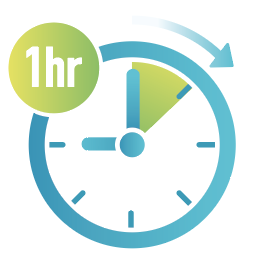
Every hour, more than two people die of skin cancer.

Your risk for melanoma doubles if you’ve had more than five sunburns.

The good news is that if you catch skin cancer early enough, you can be A-OK.
Remember, while early detection is key, so is prompt treatment. Seeing a dermatologist right away for a diagnosis helps keep the treatment minimal and the cost as low as possible.
The Big See & Me
Since mirrors are a perfect tool to help people identify potential skin cancers, the Foundation is sharing its supply of branded “What’s That?” mirror clings for people to display in businesses and public spaces.
The clings are part of a broader, grassroots digital and social media campaign. People are invited to sign up to get updates about The Big See, download a social media toolkit, and order mirror clings to display. The goal? A big conversation in communities nationwide and a flood of social media posts across newsfeeds worldwide.
The Big Takeaway
Early detection is in your hands! You can save your life or the lives of people you care about by spotting skin cancer early, when it’s easiest to cure, and before it becomes dangerous, disfiguring or deadly. Your eyes are a powerful tool. Use them to take a close look at your skin each month, and if you see something new, changing or unusual, go get checked!



